Behind The Lens: MING 20.01 Series 2 AgenGraphe Chronograph
by GaryG
When it comes to watches, for me it’s all about the people! I’ve known Ming Thein, the “benevolent dictator” of Ming Watches, for well over a decade; among other things he has been my photography teacher, and I’m the happy owner of one of his watches, the Model 17.06 Monolith.
I’ve known my publicity-shy watch buddy “Chuck” even longer than that, and it was at a lunch that both of us attended with Ming several years ago that we saw initial plans for the ultra-simple Model 20.01 Concept chronograph, which later morphed into the 20.01 Mosaic chronograph with its amazing 3mm thick laser etched transparent dial with a customized version of Agenhor’s AgenGraphe movement beneath.
Ultimately, those designs proved uneconomic for series production: only one Concept was produced, and the Mosaic was made only in a series of eight prototypes for early backers of the brand. Happily for collectors like Chuck, a modified Series 2 version of the 20.01 did subsequently go into production, and thanks to his kindness I’m able to present it to you here.
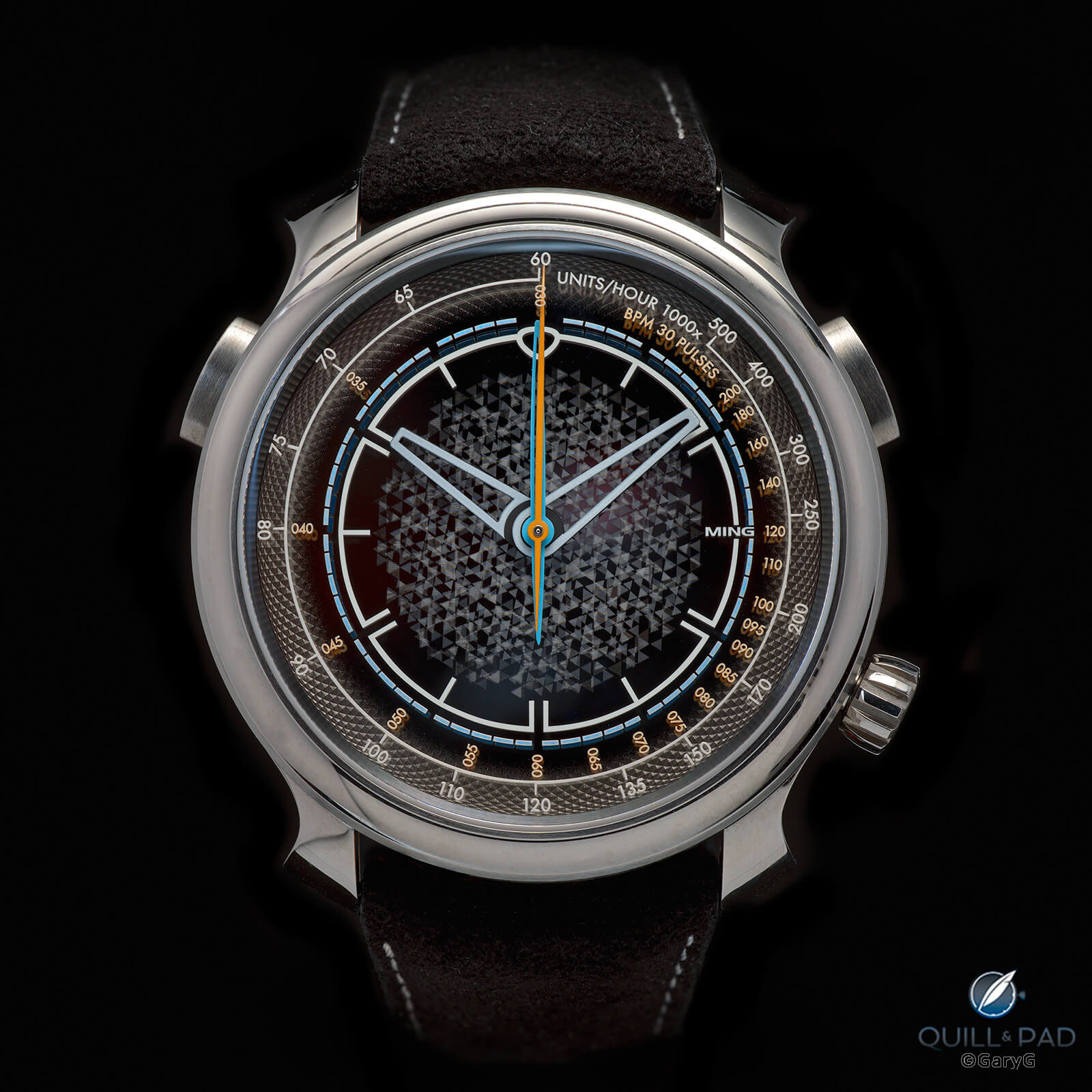
Ming meets Agenhor: Ming Model 20.01 Series 2
Before going further, I’ll issue a mea culpa: in the dial side photos you’ll see, the chronograph seconds and minutes hands appear slightly misaligned. That’s my error: it was only after spending the better part of two days shooting and processing that I noticed I had failed to go through the start-stop-reset routine with the chrono. Once done, the hands popped into alignment – but I hope you’ll forgive me for not going back and repeating all the photography.
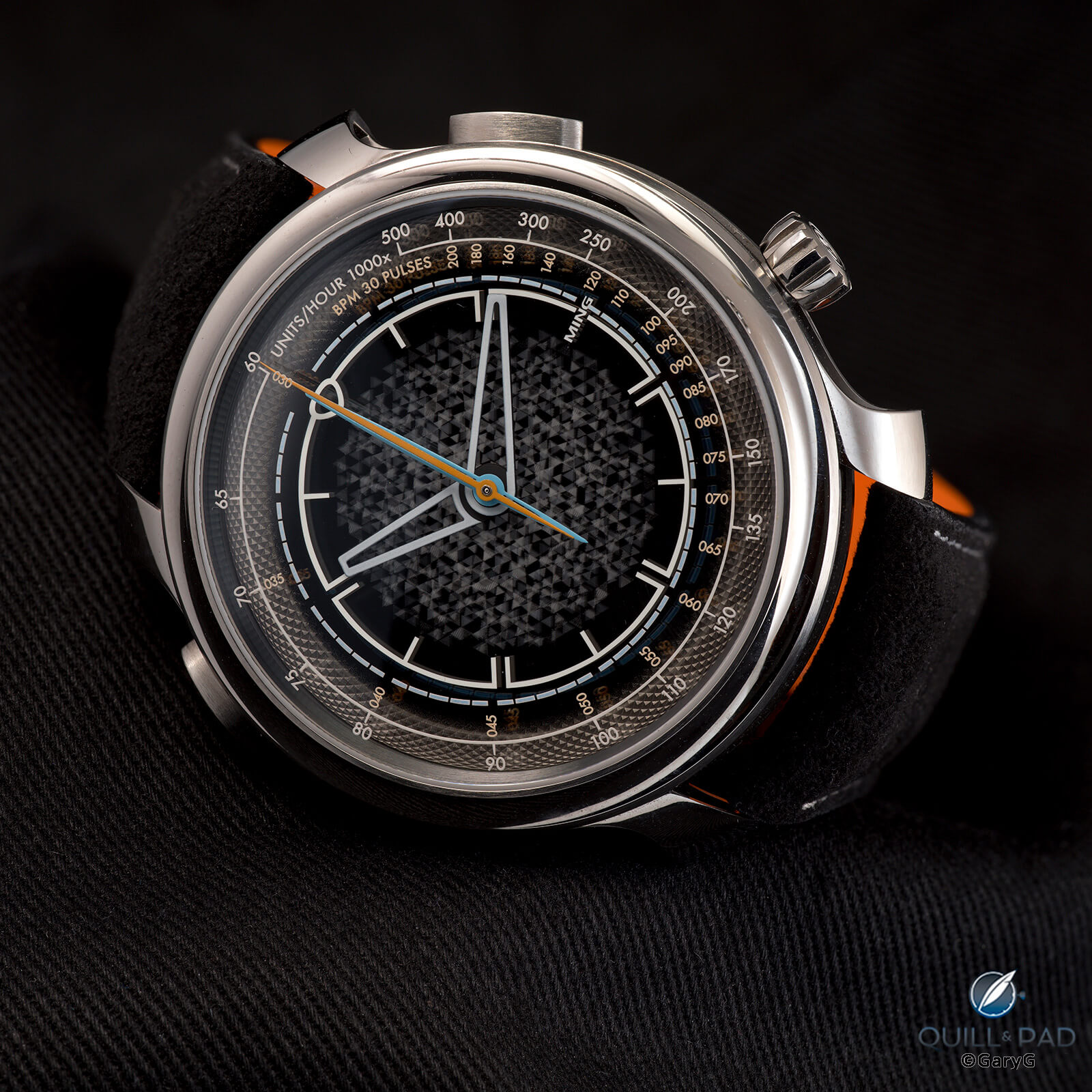
Nobody’s perfect: dial side, Ming 20.01 Series 2
Why it’s cool
While simplified a bit from the original Mosaic 20.01, the dial side of the Series 2 is still a remarkable achievement.
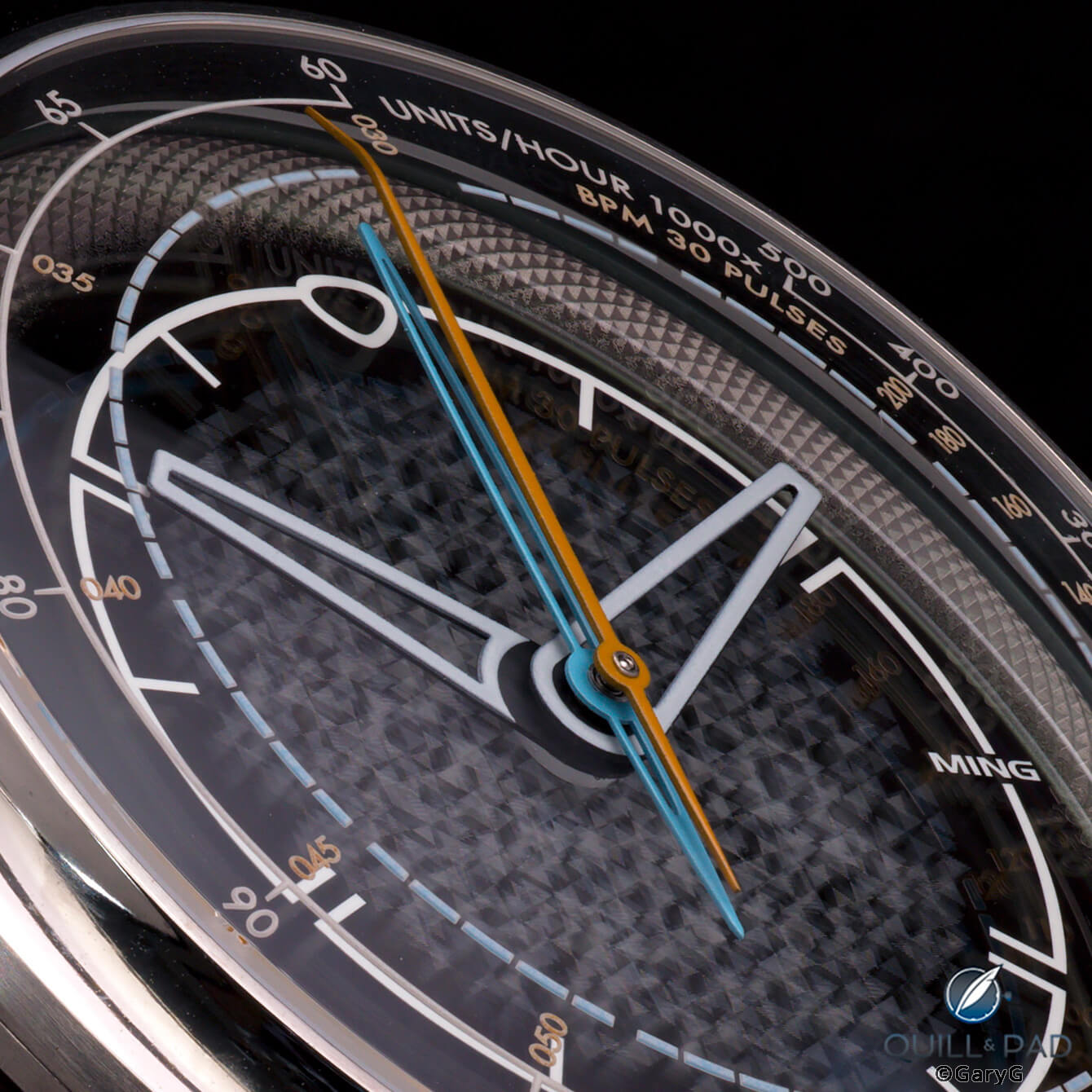
Low angle view, Ming Model 20.01
If you look closely at the photo above, you can pick out several layers. The base is a titanium plate with a modified Clous-de-Paris finish; above that is a sapphire layer with a gradient finish that reveals the Clous-de-Paris and then darkens gradually to black behind the index markings; and above that is a 1.1mm thick sapphire layer with the three-tiered mosaic of etched triangles and the hour ring.
Hovering above it all are the chronograph, pulsometer, and tachymeter scales on the underside of the crystal. And while you’re looking, check out the bend on that orange chrono seconds hand!
The straight-on view also gives an impressive sense of depth, with the multi-layer triangular mosaic adding visual pop.
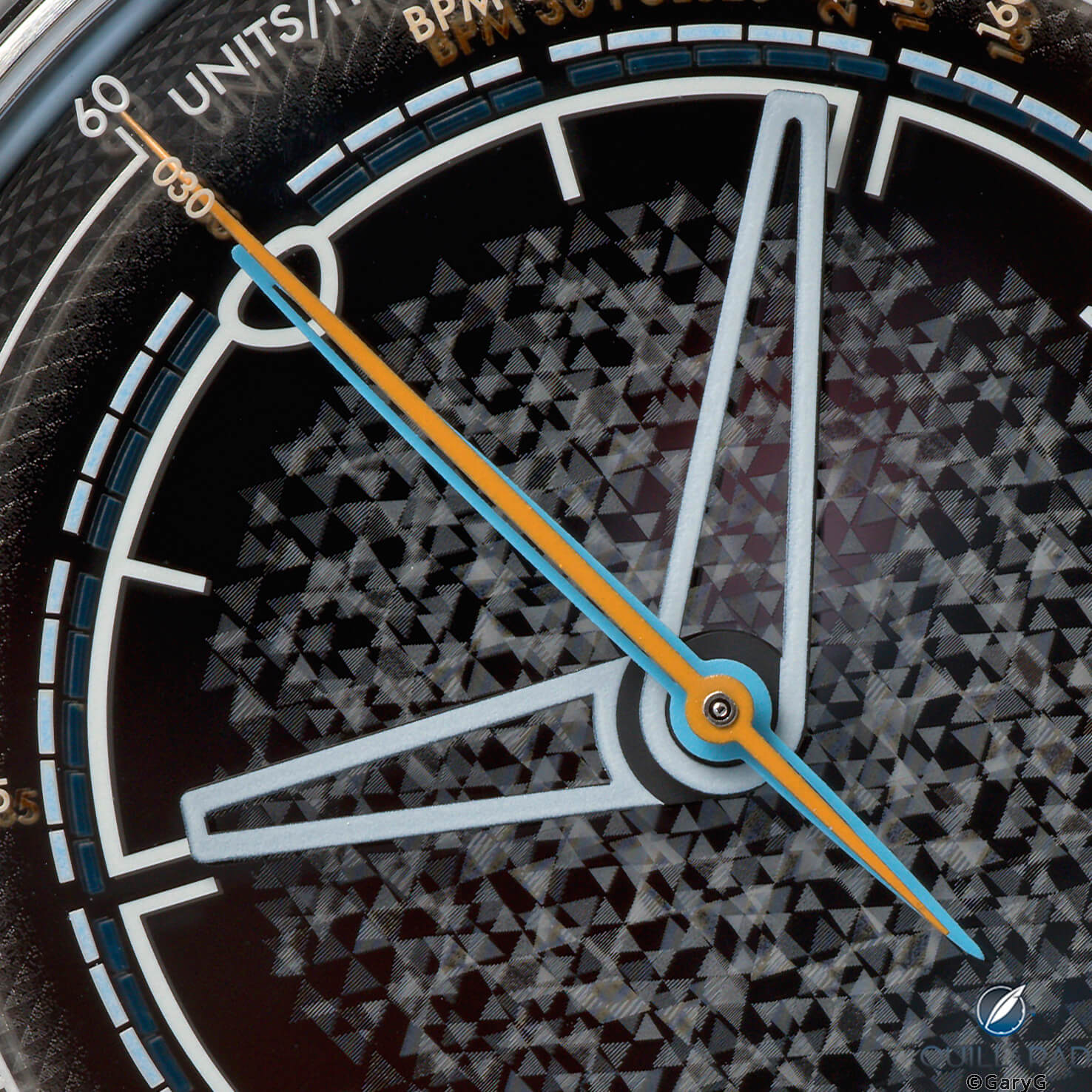
Dial detail, Ming Model 20.01 Series 2
As with pretty much all Ming watches, though, the fun is just beginning with views of the watch in direct light. When seen at different angles and with varied incident light, the multiple layers provide a look that goes from vivid, high-contrast blackness to smoky to mirror-like, as in the photo below.
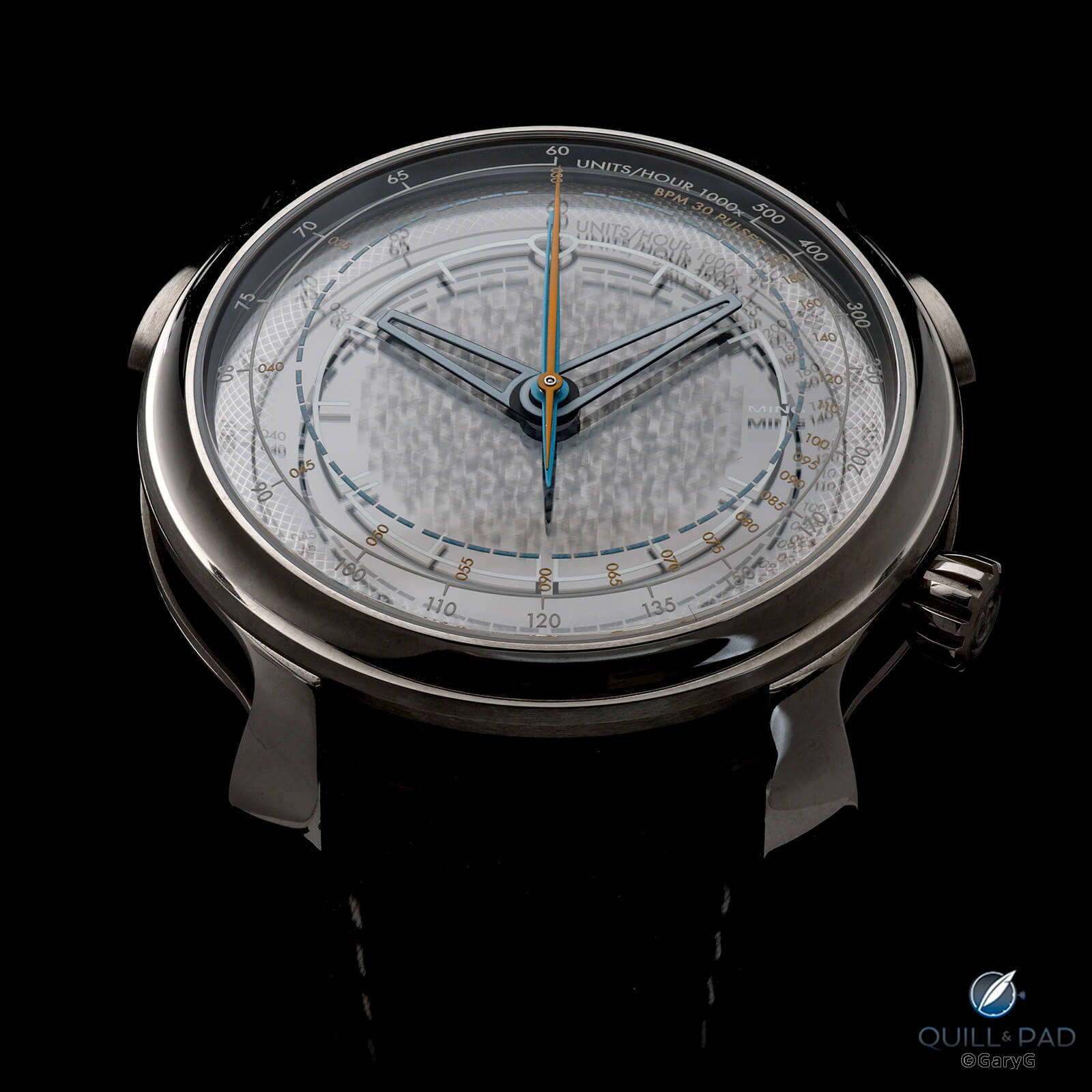
Getting interesting: Ming Model 20.01 in shallow incident light
One of the first exercises Thein had me perform as a student was to shoot a single watch with multiple light positions – an exercise I heartily recommend to anyone who is learning to photograph watches. For fun, I replicated the experiment with the 20.01: same watch, same camera position, with a single flash in two different positions.
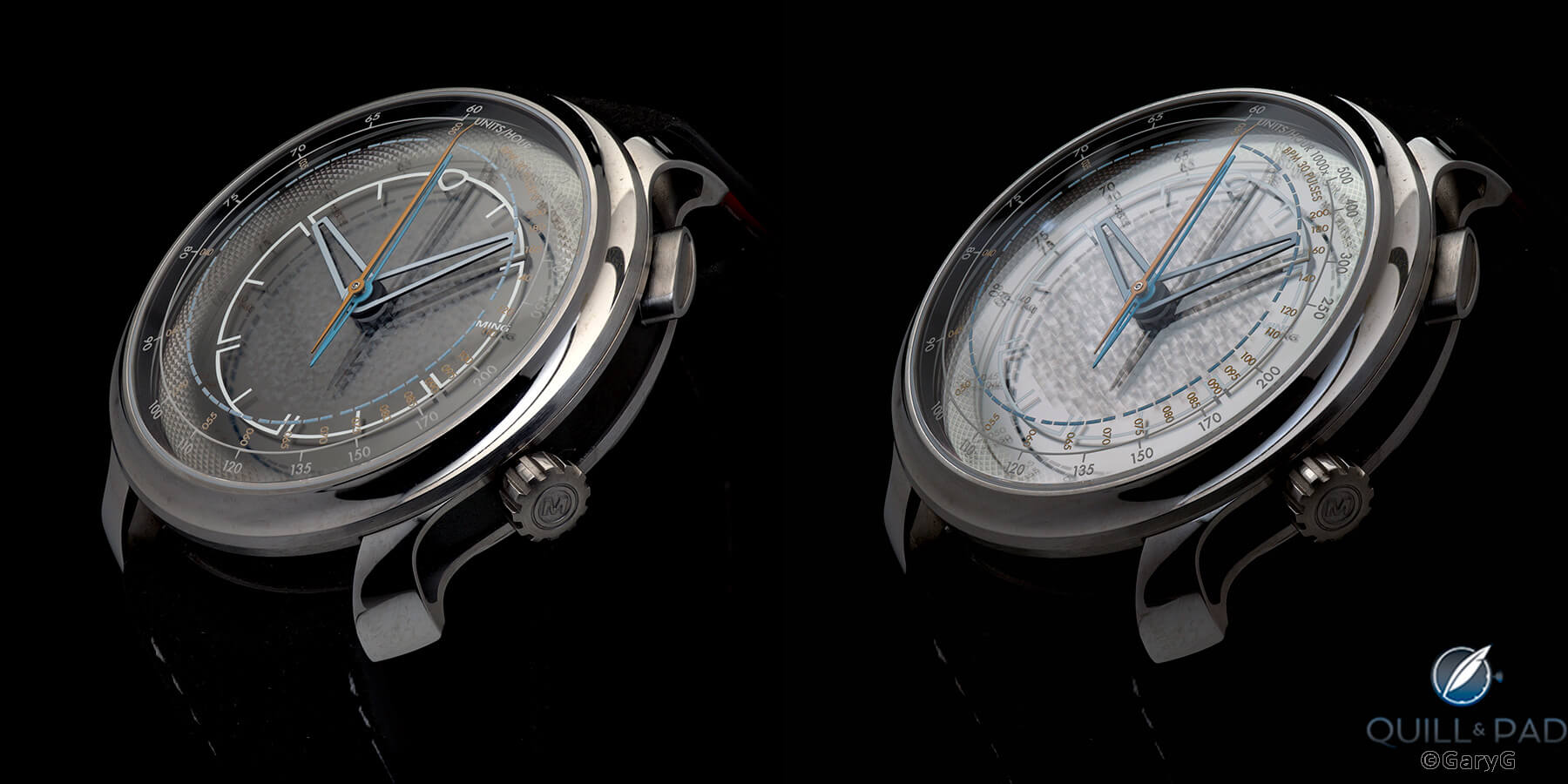
Light experiment: Model 20.01 Series 2 in varied light
And then, just because I could, I took a third photo from a different setup, flipped it horizontally, and added it on the left end to yield a trifecta of perspectives.
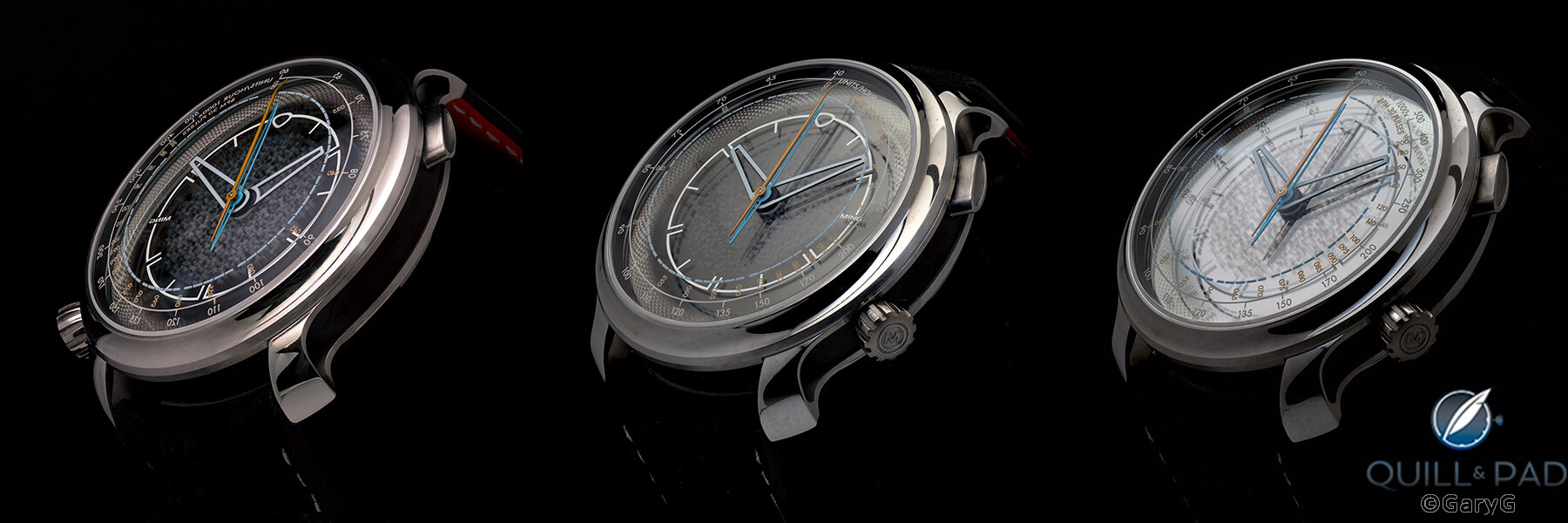
One watch, three views: Ming Model 20.01
Compared with the original 20.01 Mosaic, the Series 2 does give up the transparency of the dial that affords a view of the movement below; but given the variety of ways of catching light available and the added chronograph indications on the crystal, adding back a view of various gears and levers behind the Series 2’s mosaic might have been too much of a good thing.
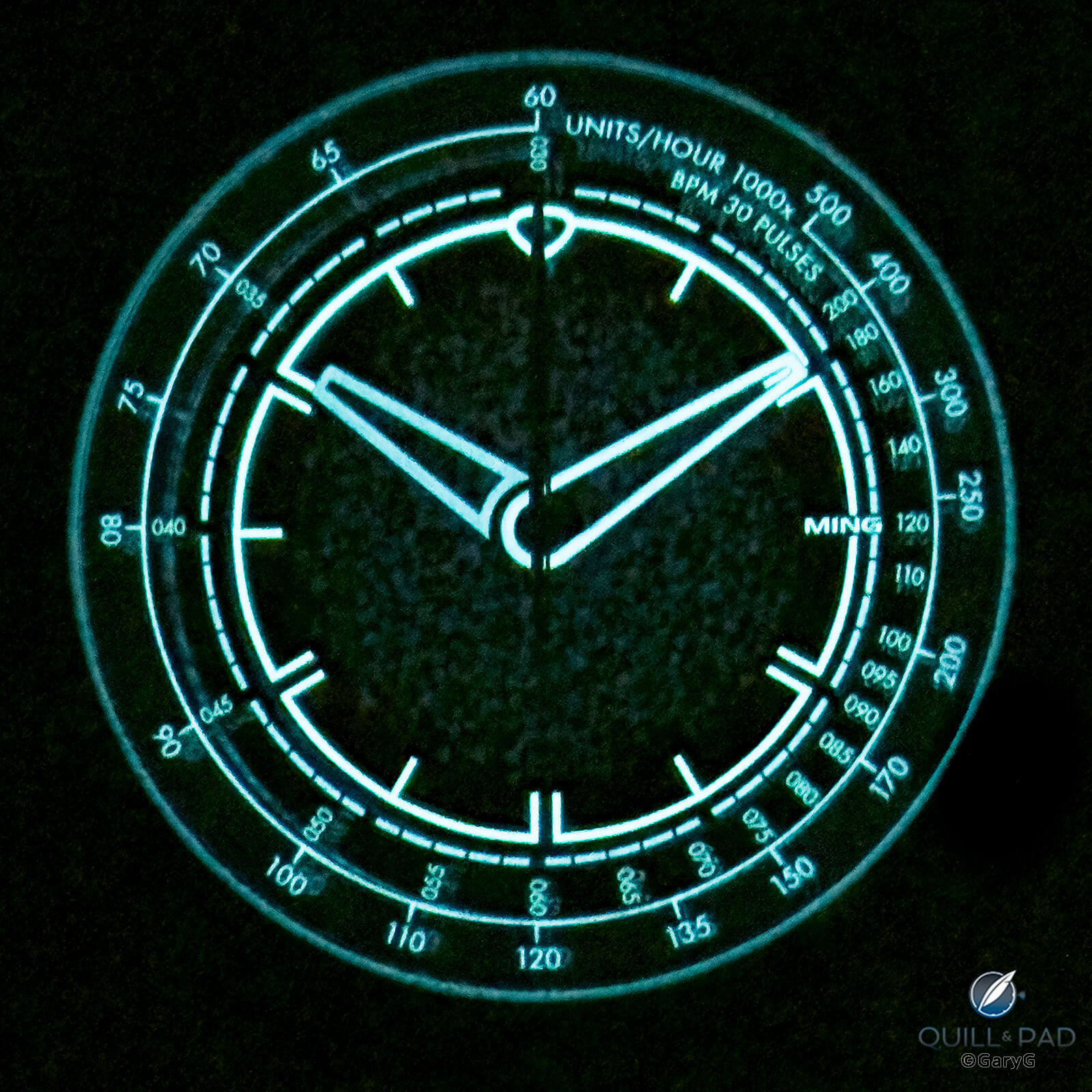
Luminous indications, Ming Model 20.01 Series 2
A quick lume shot finished off my front-side shooting. Both the main hands and chrono scales show up well in the dark; if I’m quibbling, I suppose I’d ask how we are supposed to read the chronograph against those luminous scales when the chrono hands aren’t luminous, but practicality aside the appearance of the watch in darkness stands up to its appeal in full light.
And it’s an AgenGraphe
We’ve been big fans of Agenhor’s AgenGraphe here at Quill & Pad for as long as that movement has been around, and I’m the proud owner of the Agenhor/HEAD Genève “Carpe Diem” clock from Only Watch 2017.
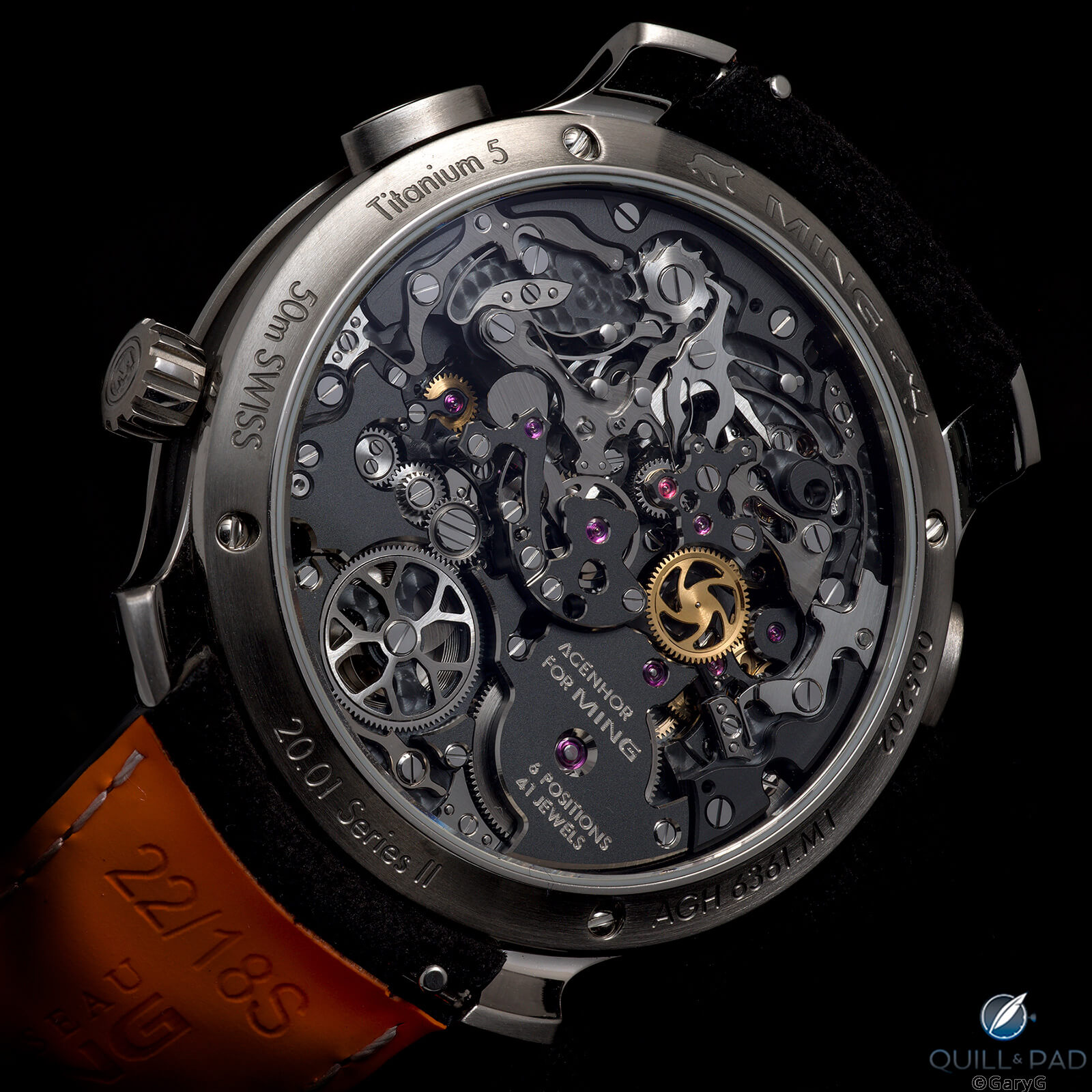
AgenGraphe Cal. AGH 6361.M1 in the Ming Model 20.01 Series 2
Flipping the Series 2 over reveals the delightful view seen above: the now-familiar AgenGraphe architecture, rendered in tones from anthracite to natural steel. For those of you who are familiar with Agenhor’s work, it should come as no surprise that a whimsical touch is included in the bridge shapes. In earlier embodiments of the AgenGraphe the central bridge looked suspiciously like a rendering of Batman; in the Model 20.01 it instead takes on a shape near and dear to Thein’s heart, a bear.
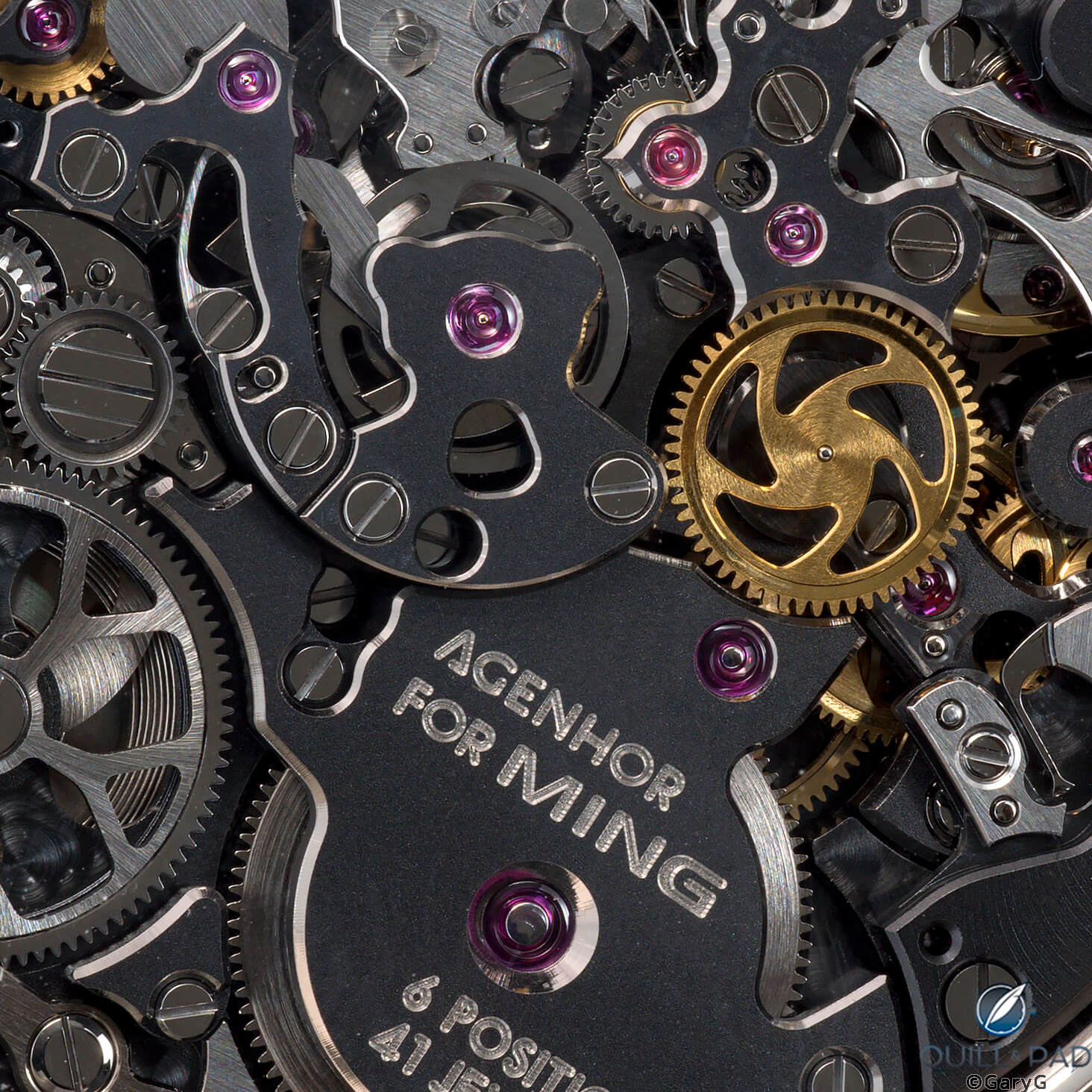
Bear with me: movement detail, AGH 6361.M1
Movement side photography can sometimes be a bit of a grind, but I found that the Model 20.01 and its AgenGraphe movement lend themselves to being photographed from a variety of angles, including the low-angle layback position shown below.
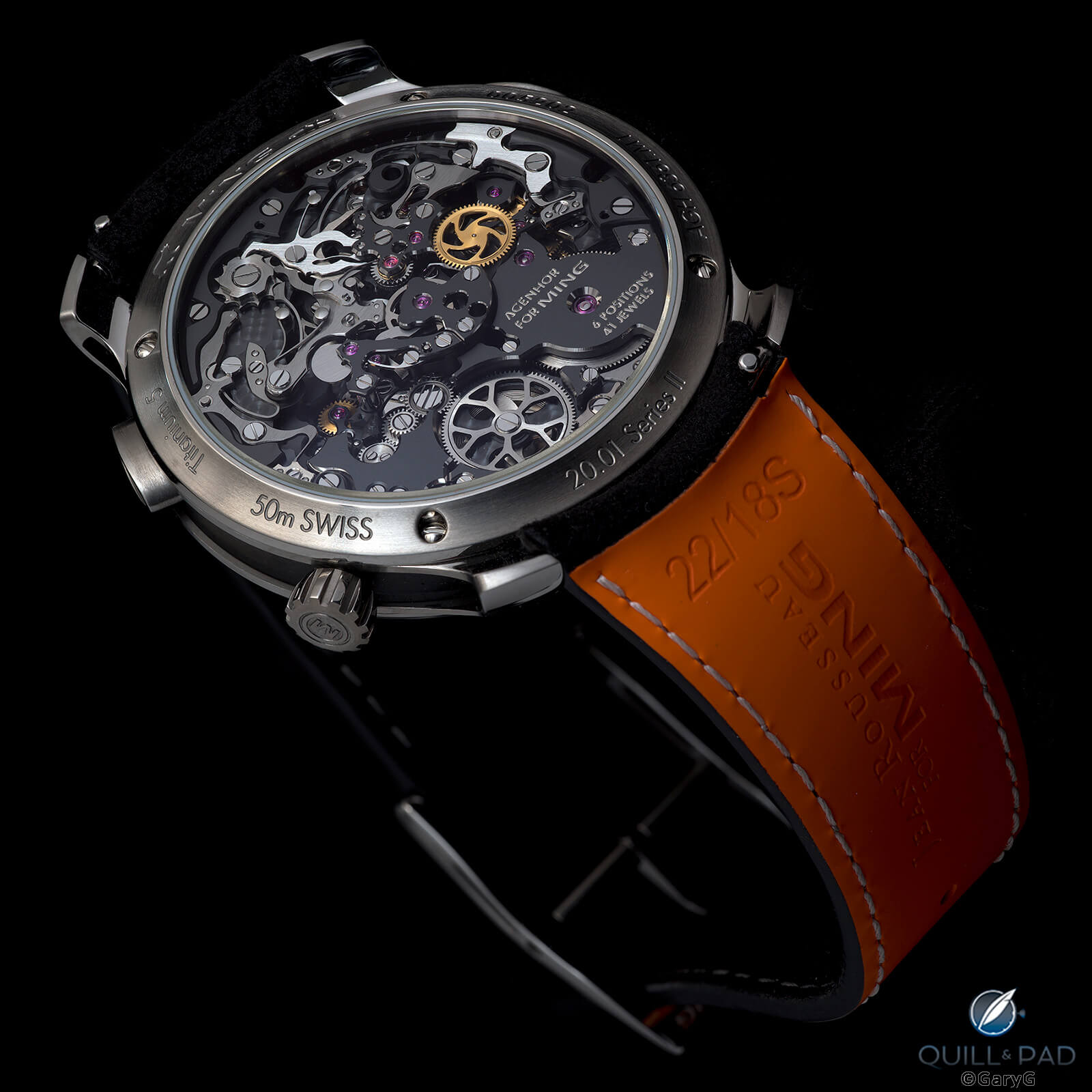
Shallow angle view, Ming 20.01 with AgenGraphe movement
From a functional perspective, the AgenGraphe remains excellent, with satisfying instantaneous jumps of the minute register, and its positive pusher feel enhanced by improvements to the chronograph clutch system. One difference from prior AgenGraphes is that the Ming version of the movement is manually wound rather than being powered by an under-dial peripheral rotor. The result is the ability to include all the dial-side visual treats without making the watch unduly thick, and the crown feel is silky smooth – so much so, in fact, that next time I’m at Agenhor I’ll plan to ask them about the durability of the keyless works when subjected to manual winding duty.
Beyond the dial and movement
Thein’s obsession with strong design goes well beyond dial appearance and movement finishes, and the 20.01 Series 2 is no exception. The multi-component case features Ming’s hallmark flying blade lugs, cleverly attached to the bezel on the interior edge of the lugs to deliver a seamless appearance. Other design touches including DLC-darkened inner caseband surfaces and hollowed oval pushers add visual interest and create a coherent, and appealing, look.
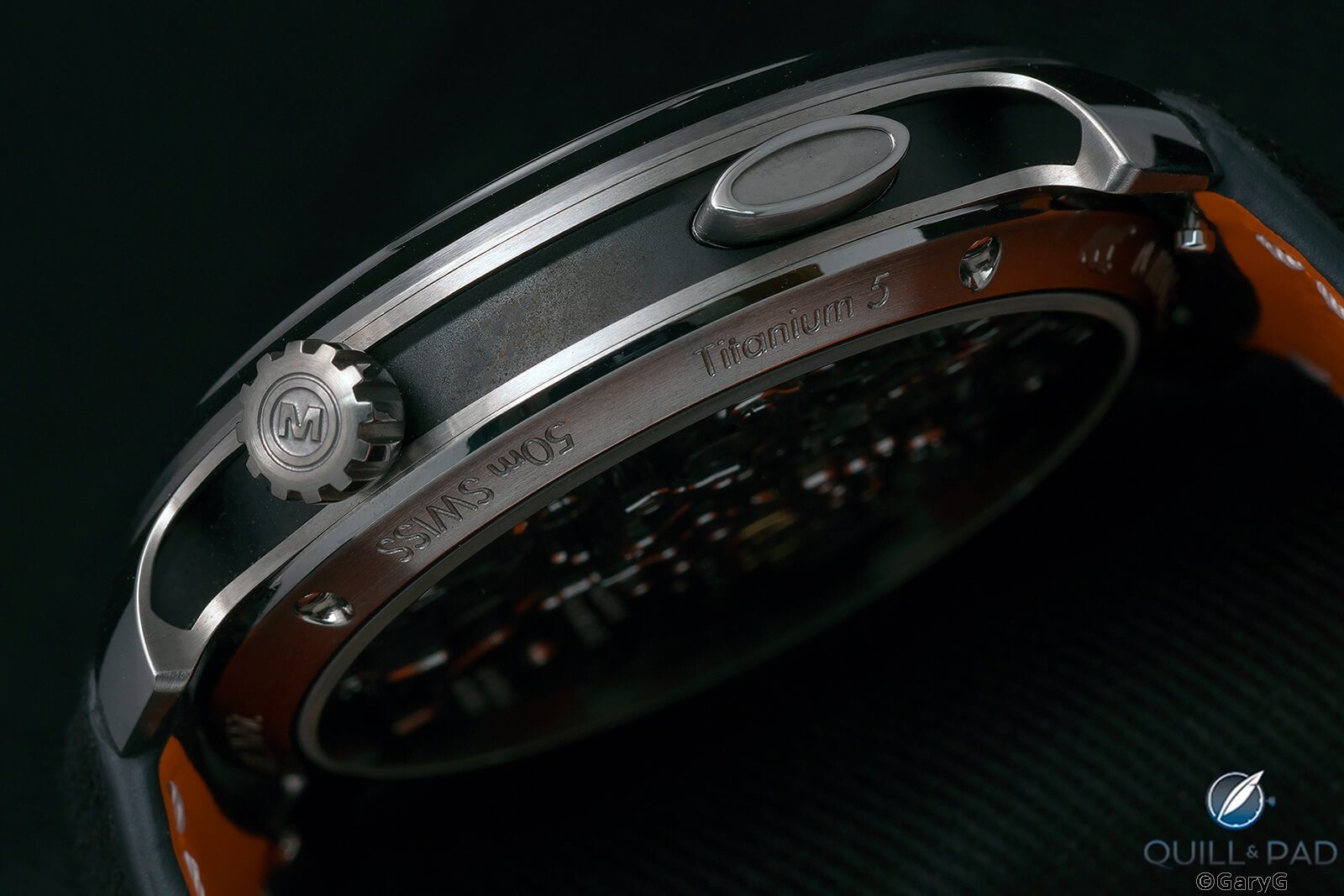
Attention to detail: case profile, Ming Model 20.01 Series 2
The unusual “keeperless” tang buckle is elongated, with an opening that allows the end of the strap to be tucked under the body of the strap rather than projecting above it.

Not your grandfather’s keeper: innovative clasp, Ming 20.01
While the clasp is perfectly fine looking, I kept staring past it at that movement; here’s a shot so you can enjoy the view as well.
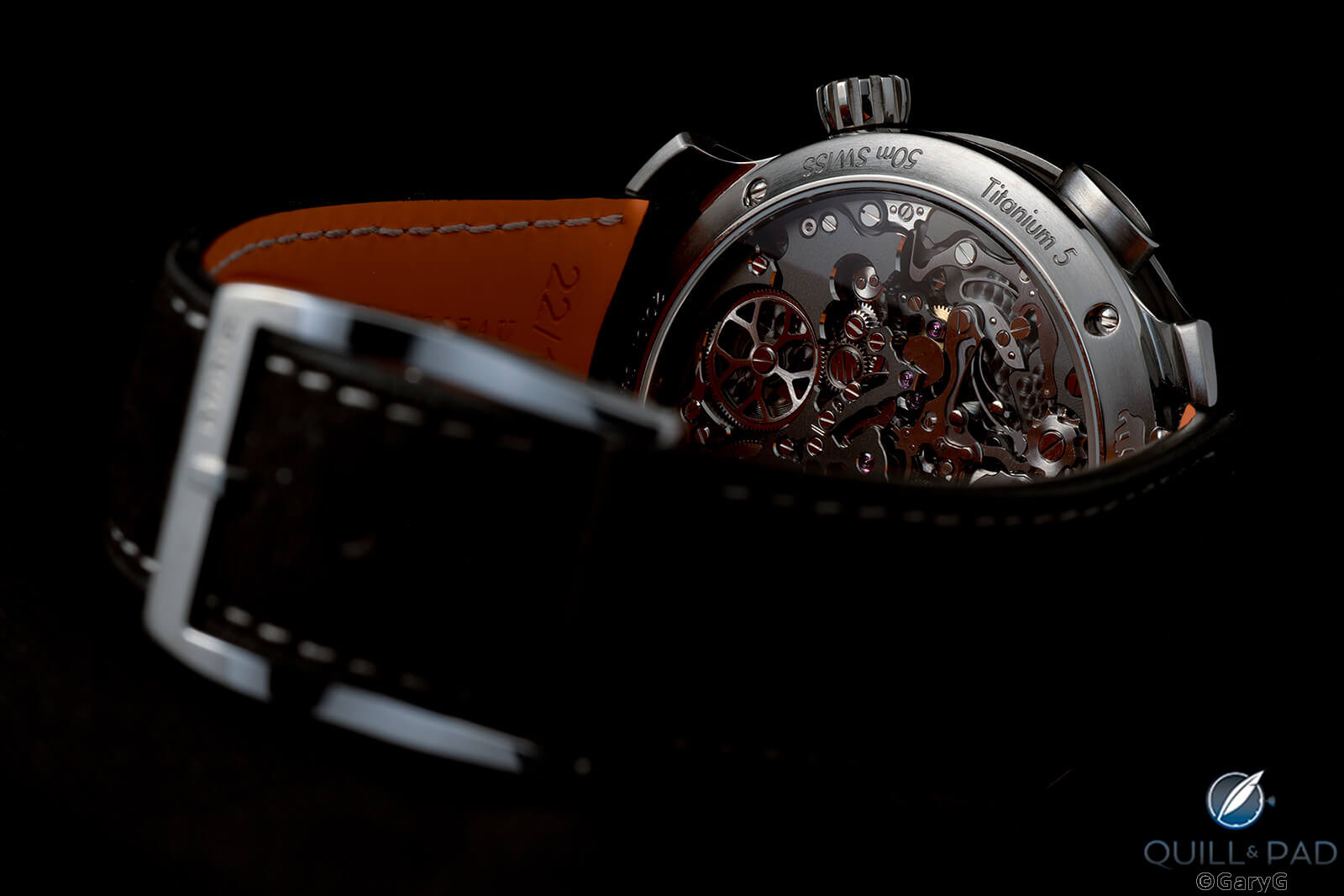
Nightstand view: checking out the AgenGraphe movement
On the wrist
The 20.01 isn’t a small watch at 41.5mm in diameter, but the titanium case helps to make it quite comfortable on the wrist and the dark dial color and prominent white hour index ring compress the apparent width of the watch, at least to my eye.
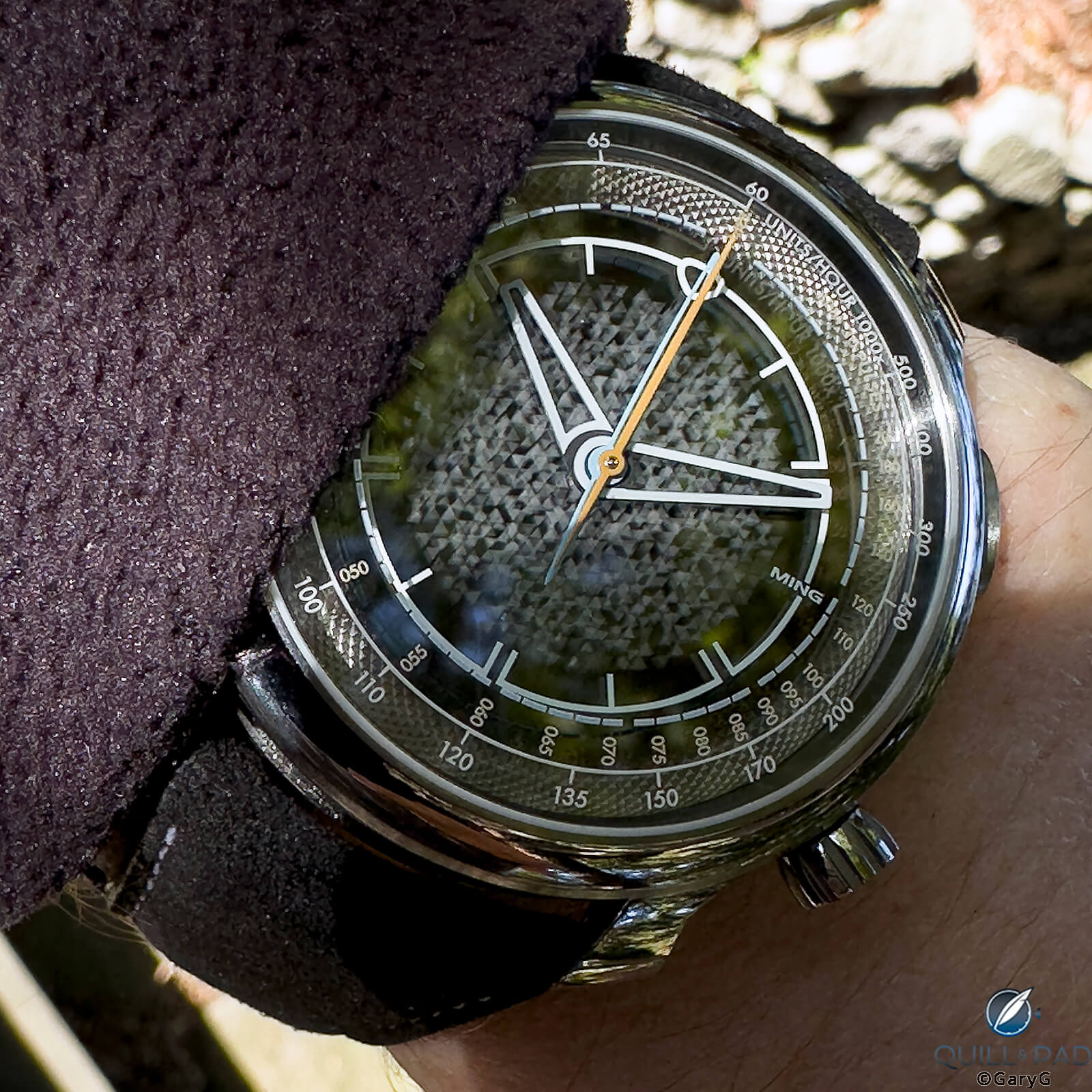
On the wrist: Ming Model 20.01 Series 2
I have the benefit of having a fairly wide, flat wrist, but even for those with somewhat smaller wrists the sharply downturned lugs should allow the watch to sit comfortably.
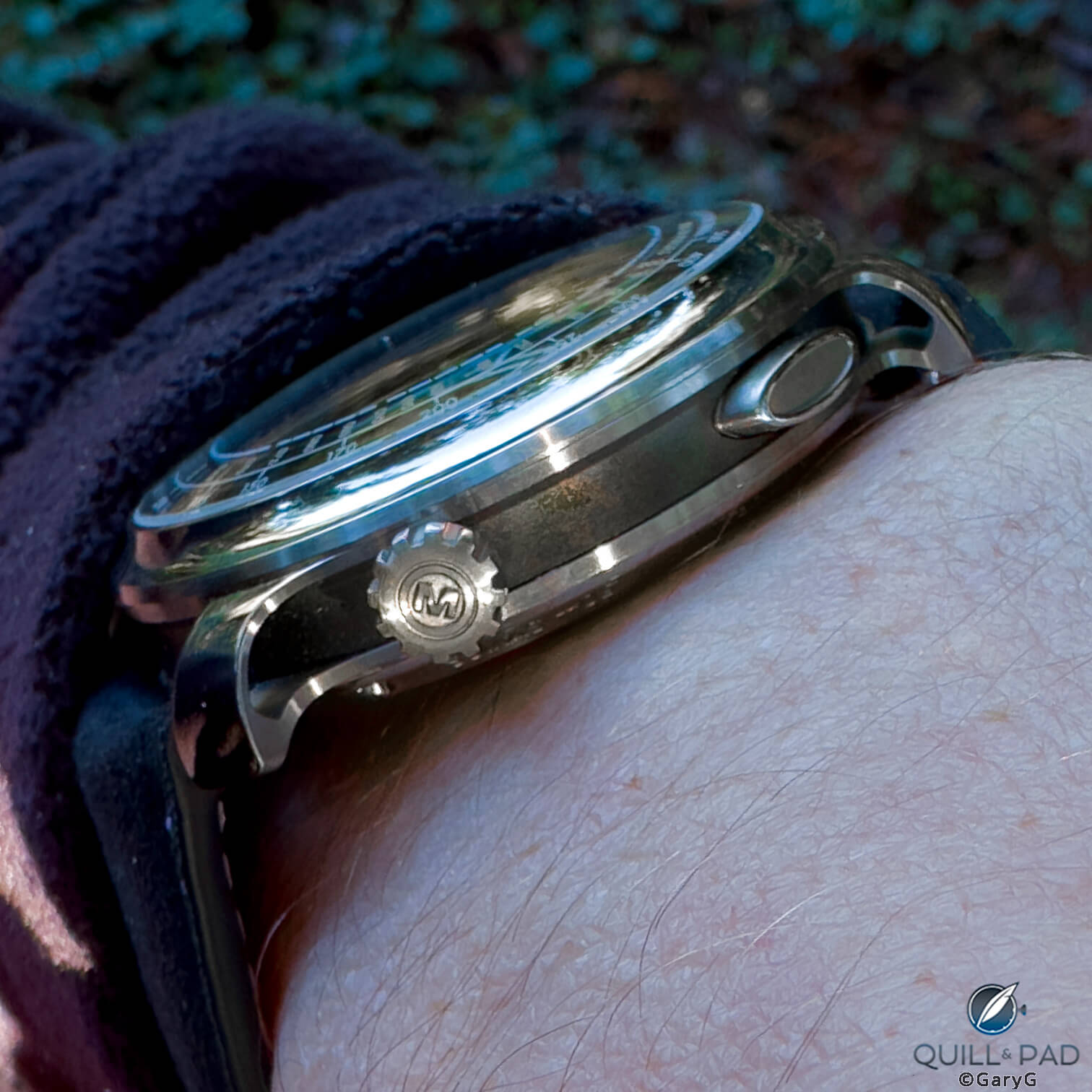
Profile view on the wrist, Ming 20.01
In the profile view above, you can also see the slight dome of the crystal that adds to the feeling of depth of the watch without making it too thick, along with the relatively thin, concave bezel that helps to keep this piece from becoming a scratch magnet.
The no-keeper buckle would take some getting used to for me: while tucking the strap under certainly streamlines the look, for those of us who like to wear our watches tight on the wrist getting the tail of the strap untucked when you want to take off your watch could be quite an exercise in frustration. While Ming’s literature gives the impression that this buckle style will be standard on future models, I for one would welcome the option for a more traditional tang.
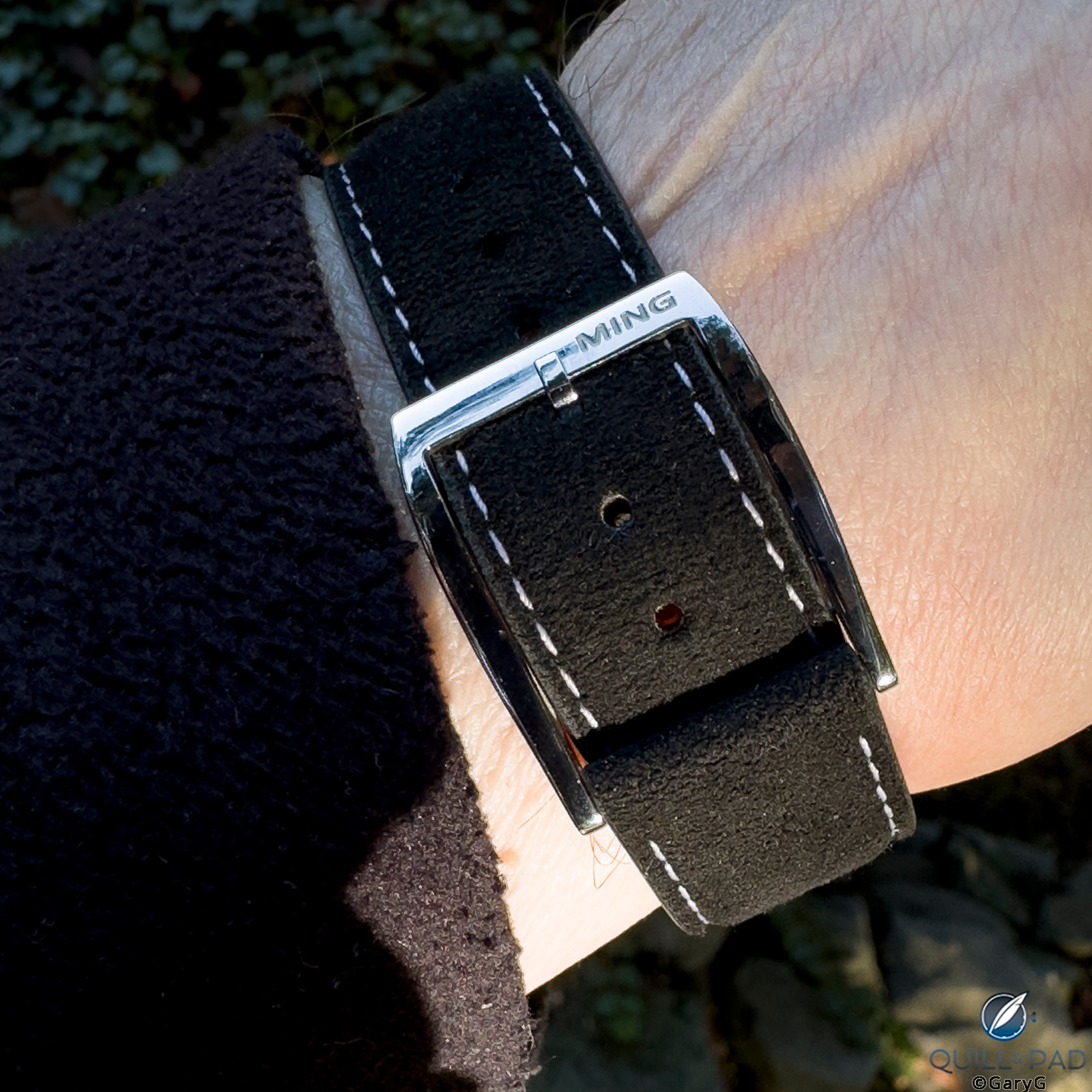
Tucked away: Ming’s keeperless clasp system
Any other quibbles? As with Ming’s earlier GMT model, but certainly not exclusive to Ming as a brand, many of the printed indications for the minor chronograph indications are pretty much invisible to my aging eyes. The main chronograph seconds indication also doesn’t subdivide the seconds, but that’s no problem for me given that I can’t remember the last time I used a chronograph to time partial seconds.
Final thoughts
Ming has come a long way as a brand from its beginnings in ultra-simple, closed-back watches to a point at which it seems perfectly natural for them to be offering, especially as part of their “Special Projects Cave” sub-brand, mechanically sophisticated and design-forward watches such as the Model 20.01.

Sophisticated mechanics: Ming Model 20.01 Series 2 with AgenGraphe movement
If anything stands between Ming and future success, it isn’t going to be the watches: what we’ve already seen is very impressive, and what they have already revealed about their plans for 2023 and beyond is exciting.
As a brand that sells directly to its consumers, however, Ming must remain acutely aware: live by the customer relationship model, die by the customer relationship model. Without intermediaries and friendly retail doors to engage enthusiasts, the burden falls entirely on the maker to ensure that current customers and potential buyers feel well served. Building and sustaining affinity is a tricky thing; and while making great product is a wonderful thing, it isn’t everything.
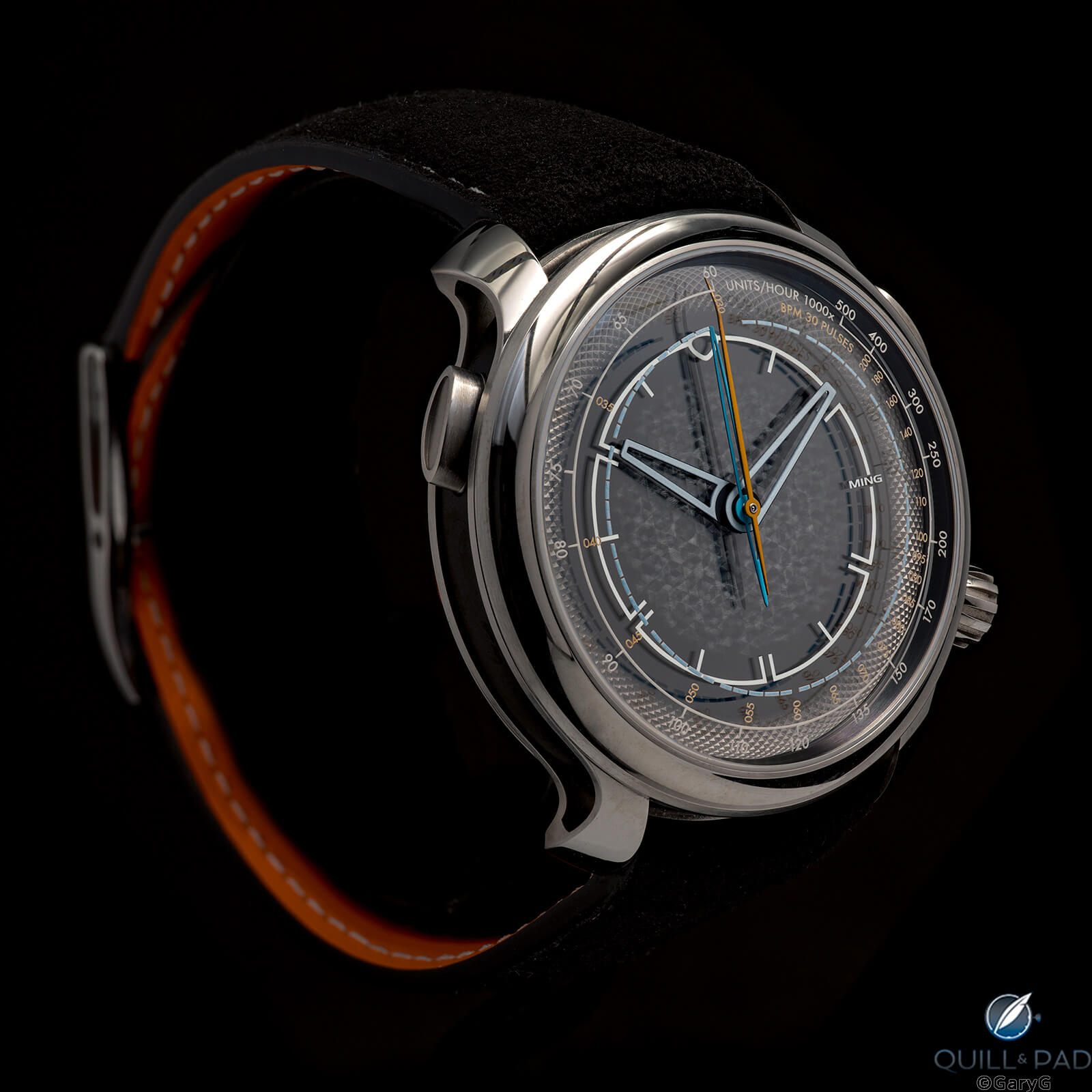
Parting shot: Model 20.01 Series 2 by Ming with Agenhor
For more information, please visit www.ming.watch/products/ming-20-01-series-2
Quick Facts: Ming Model 20.01 Series
Case: 41.5mm by 14.2mm Grade 5 titanium case with 34 parts and 4 finishes; domed front and rear sapphire crystals with double-sided anti-reflective coating; front crystal with etched and luminous markings
Dial and hands: 1.3mm thick sapphire dial with HyCeram Super-LumiNova fill and gradient fade; second sapphire dial with etched and luminous minute markings; Grade 2 titanium dial base with Clous-de-Paris pattern; hands with SuperLumiNova X1 fill
Movement: Manually wound Agenhor for Ming AgenGraphe Cal. 6361.M1 central chronograph; 55-hour power reserve; 21,600 vph (3 Hz)
Functions: Hours, minutes; 60-minute chronograph; pulsometer and tachymeter
Price: CHF 35,000
Limitation: 50 pieces; sold out
Production Year: 2022
You might also enjoy:
Why I Bought It: Ming Watches Model 17.06 Monolith
Ming 37.05 Moonphase: Form Over Function Has Rarely Looked Better
Ming 18.01 H41 And 27.01: Revolution And Evolution
Creator Conversation: An In-Depth Discussion With Ming Thein Of Ming Watches
Leave a Reply
Want to join the discussion?Feel free to contribute!



I’d like to comment on the last paragraph where you rightly point out that a brand that sells directly to its consumers lives and dies by its relationship with its customers. And that making a great product isn’t everything. If one needs service on their Ming watch, where are they going to take it? While the base movement may be a standard configuration, the modification to the movement may require more specialized servicing. And what if and when a replacement part becomes necessary? I had the occasion to reach out to Ming and ask directly as I have one of their watches. They recommend sending the watch directly to them in Singapore as they won’t sell a replacement part directly to the customer. And that’s the point. Given the design and configuration of the case, the dial, the hands, the crown, the movement, it appears that service and repair and replacement parts, if needed, are best handled by Ming themselves, and that’s what they recommend. It has to be sent to Singapore, and although you can insure the shipment, if it’s lost or stolen you can’t replace it because all Ming watches so far are limited edition models. Perhaps I shouldn’t, but I find it gives pause to wearing use, as the consequences of it meeting with an accidental mishap or just normal wear and tear presents with an additional set of problems in getting the watch serviced properly. It’s become more of a consideration these days when looking to purchase. There has become that risk factor, especially with an independent and/or a microbrand. It’s up to us watch customers/consumers to evaluate the risk involved, because the brands won’t.
Just insure it for whatever the market value is, that way you can just run to change 24 or eBay and band, you have your watch again. Now that insurance won’t be too cheap,but that is the experience you signed up for right ?
I see auto correct changed ch 24 to change 24 but you get the idea.
Great review. No surprise this watch was an excellent photography subject. So many interesting angles, which means I would love to see it in the metal. The AgenGraphe is a fantastic third party movement. If there was a suitable third party chronograph movement to bridge the gap for the 10,000 CHF – 25,000 CHF price range, we’d hear less whinging about in-house this and that.
This is not a perfect watch by any means, but it takes aim with ambition and largely succeeds.
Hi Rody Nilsson här jag söker dig jag vill gärna beställa klocka behind the lens Ming 20.01S okay thank you love hälsningar från Rody Nilsson